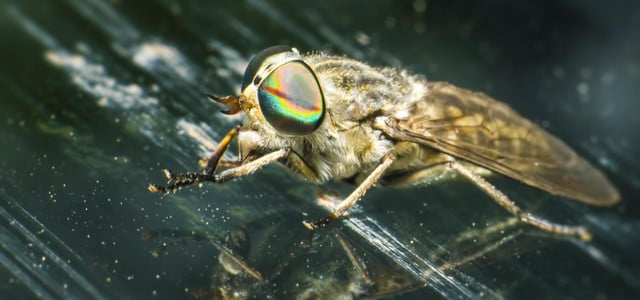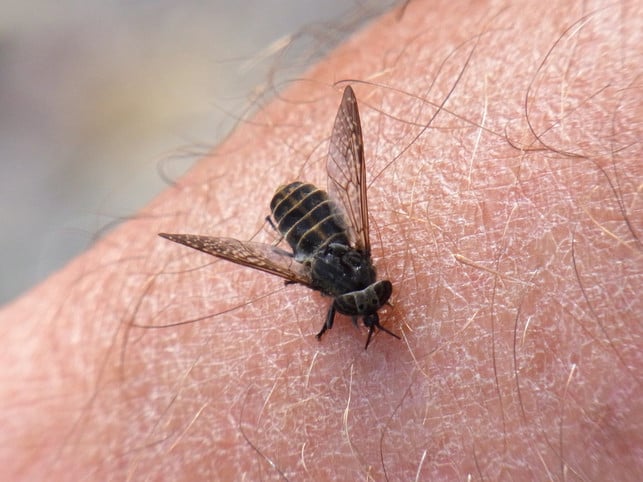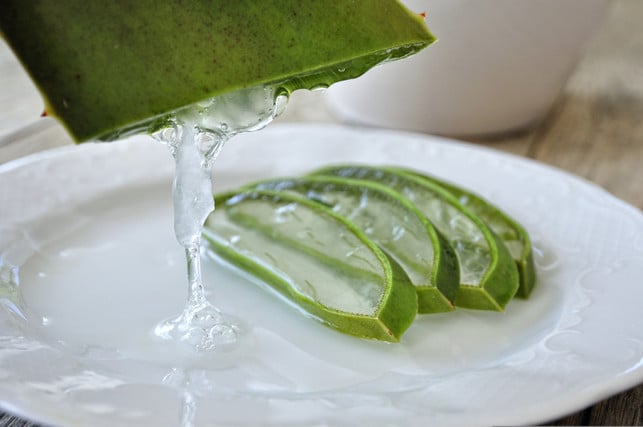
Brake stitches are painful and unfortunately not uncommon in summer. Therefore, it is important to recognize them safely and treat them correctly. You can find out how you do this here.
A relaxed summer day at the lake in nice weather – and suddenly a brake buzzes around and does not let in until it comes up. Such a brake stitch itches, hurts and can spoil the mood quite a bit. But how do you recognize brakes and how can you treat brake stitches and prevent them? It is very easy with a few measures.
How do you recognize brakes?

Brakes are one of the blood-sucking insects and are particularly active in warm and windless days in summer. They like to stay near pastures and waters and are attracted by human sweaty smell and body heat.
According to the Federal Environment Agency in Europe, the rain brake is most common. She has her name because she often contains thunderstorms or rain. Rain brakes are somewhat more elongated than ancient flying and have a gray to dark brown color and reddish faceted eyes. The largest species with up to 25 millimeters, the horse brake, can also be found in Germany. In addition to their size, you can see them on gray and brown stripes on the abdomen.
By the way: In most species, only the female brakes stab. They have a strong prickly trunk. Instead, the male feed on Nectar, which is why their trunk is receded.
Important: Even if brake stitches are annoying, the insects as pollinators, food source for other animals and helpers play an important role in the decomposition of organic substance in our ecosystem.
Brake stitch: This is how you recognize him

Although one often speaks of a brake stitch in language use, it is actually a bit. The insects tear the skin open to suck the blood.
So if you are bitten by a brake, this is therefore hardly unnoticed: the bit you usually feel immediately, they are often very uncomfortable and more painful than mosquito bites, for example. When biting, a secretion brakes under the skin that inhibits blood clotting. For this reason, brake stitches often blew a little. The swelling comes from the reaction of the skin to this secretion.
You recognize a brake stitch by the following symptoms:
- (strong) pain at the sting and afterwards
- clearly visible
- Large swelling around the stitch
- Reddening or discoloration
- if necessary itchy
Sometimes the brake even sticks to the affected area after the stitch. Overall, brakes are very difficult to drive away and prefer to stab down at less hairy parts of the body. It is particularly common that brakes can fly very quickly and cleverly. So you can even pursue your target object temporarily and try to sting until you could suck blood or have been killed.
Treat the brake stitch correctly

A brake stitch can need up to two weeks to heal. Important: Brakes can transmit diseases in rare cases, but mostly the stitches are harmless. However, the stitch can ignite or you can have an allergic reaction. If you are unusually bad after the stitch or the healing is not going well, you should catch up with medical advice.
Otherwise you can treat the brake stitch as follows:
-
Under no circumstances scratch! The puncture site can itchy, but you rub dirt and germs into the wound by scratching. This can ignite the stitch.
- If the puncture is dirty, for example because you were outside on the meadow, you should clean it.
- After a stitch, most people cool the affected area reflexively. You should first treat a brake stitch with heat: the brakes spray a protein under the skin that disintegrates from 40 degrees Celsius. Heat the area as quickly as possible, for example with a warm teaspoon. Important: don’t burn yourself.
- Then you can cool the area to relieve the itching and reduce the swelling.
- If you hardly count the itching, you can get advice in the pharmacy. For example, as a home remedy for itching you can apply aloe vera gel or coconut oil. Both act antibacterial and promote healing. Alternatively, you can press half a onion on the spot or put on an onion wrap for relief.
Prevent brake stings

Just like other stings, it is difficult to prevent a brake stitch. Some people are never stung in their lives, others several times a summer.
But you can reduce the risk a little:
- Especially in summer, if you sweat a lot, you should pay attention to sufficient body hygiene. The smell of welding attracts brakes, so the morning shower can help.
-
Avoid lakes and other standing waters on very humid and hot days. Brakes also often occur in areas with many farm animals, for example at farms and pastures. Because they can even penetrate the thick skin of animals such as cows and horses.
- A fan can be helpful on the terrace and balcony, since the insects do not like windy environments.
- Apply insect protection spray. You can also make such a spray yourself: Make mosquito spray yourself: protection with natural ingredients.
- Wear bright clothes because braking of dark colors are put on. She can also confuse patterned or striped clothing. It is also advisable to wear long and wide clothes that have less contact with the body. The brakes can stab through close clothing. Densely woven fabrics make it more difficult for insects.
- Try to move calmly. Brakes are attracted to fast movements.
Revised by Laura Hinterneder
Read more on utopia.de:
- Treat waspsticks: effective home remedies for swelling and itching
- Treat bee sting: help these home remedies
- Grass mites: natural home remedies for stitches and mites in the garden
** marked with ** or orange underlined Links to sources of supply are partially partner links: If you buy here, you will actively support Techzle\.com, because we will then receive a small part of the sales proceeds. More information.